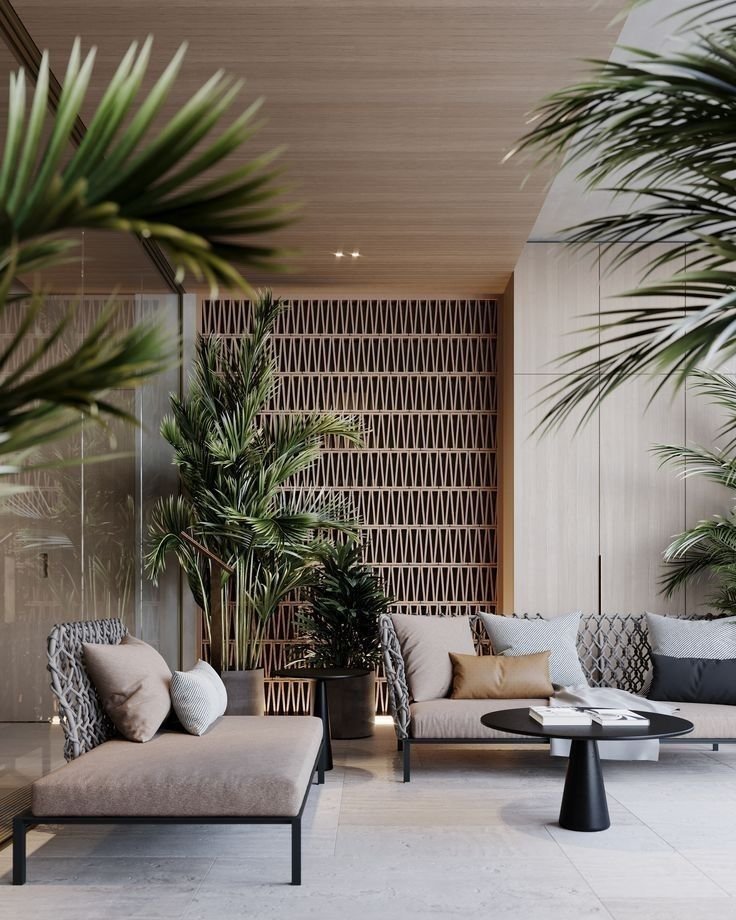Biophilic design is a modern approach to interior design that emphasizes connecting people with nature by integrating natural elements into living spaces. It improves well-being, reduces stress and increases productivity. In an urbanized world, where we spend up to 90% of our time indoors, bringing nature indoors becomes a necessity for our emotional and mental balance.
Benefits of biophilic design
1. Reduce stress and anxiety – Plants, natural light and organic materials create a soothing environment.
2. Improve air quality – Plants purify the air and help maintain a healthy indoor climate.
3. Boosting productivity and creativity – A nature-inspired environment helps with concentration and efficiency.
4. Create a pleasant and comfortable atmosphere – Natural textures and earthy colors induce a state of relaxation.
How to integrate biophilic design into your home
✅ Use indoor plants
- Choose air-purifying plants: Ficus, Fern, Aloe Vera, Monstera.
- Create a green wall with climbing plants for a great visual impact.
✅ Maximize natural light
- Use see-through curtains or blinds that let in light.
- Position mirrors strategically to reflect natural light throughout the room.
✅ Integrates natural materials
- Solid wood furniture, linen or cotton textiles, stone or ceramic decorations.
- Wood or marble floors for an authentic and elegant look.
✅ Use colors inspired by nature
- Shades of green, brown, beige, light gray to create a relaxing ambience.
- Avoid very artificial or cold colors that can give a feeling of stiffness.
✅ Incorporates natural sounds and smells
- Indoor fountains for a pleasant background sound.
- Diff diffusers of essential oils with lavender, eucalyptus or pine scents.
Practical examples of biophilic landscaping
1. Living room with natural accents – A relaxing corner with hanging plants, wooden furniture and scented candles.
2. Biophilic Bedroom – Organic cotton linens, a wooden accent wall and warm, diffused light.
3. Eco-friendly kitchen – Natural stone countertops, open shelving with herbs and large windows for natural light.
4. Natural-influenced bathroom – Moisture-loving plants, treated wood and stone for a spa-like effect.
5. Biophilic workspace – Window-facing desk, plant pots and natural materials for a productive environment.
Examples of biophilic interiors: Living with natural accents
The difference between aesthetic minimalism and functional minimalism.
How to create an airy interior without compromising comfort.
Examples of modern minimalist apartments.
Smart Solutions for Small Spaces: Maximize Every Square Meter”
Biophilic design is not just a trend but a necessity for a healthier and balanced lifestyle. Implementing this style in your home will transform the space into a natural retreat that gives you energy and tranquility.

